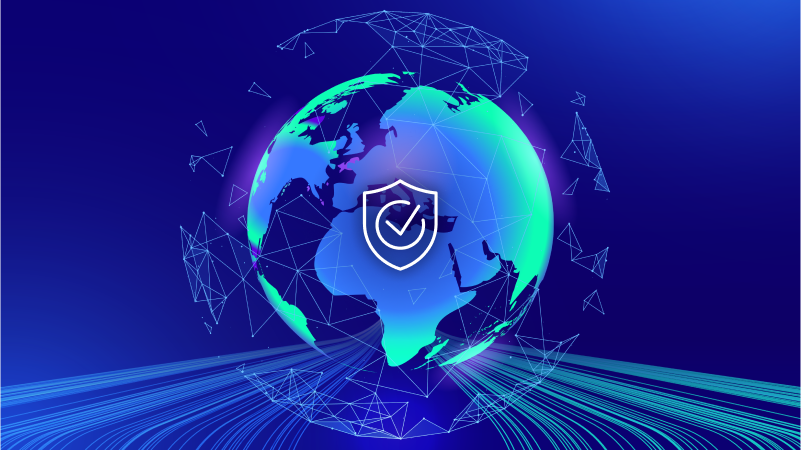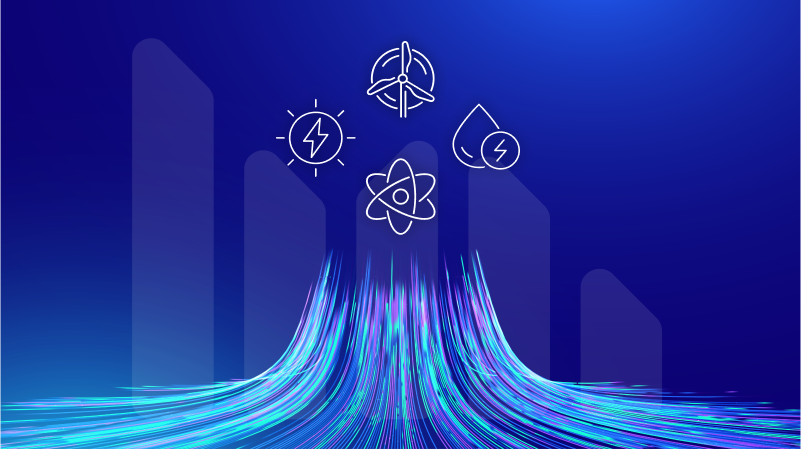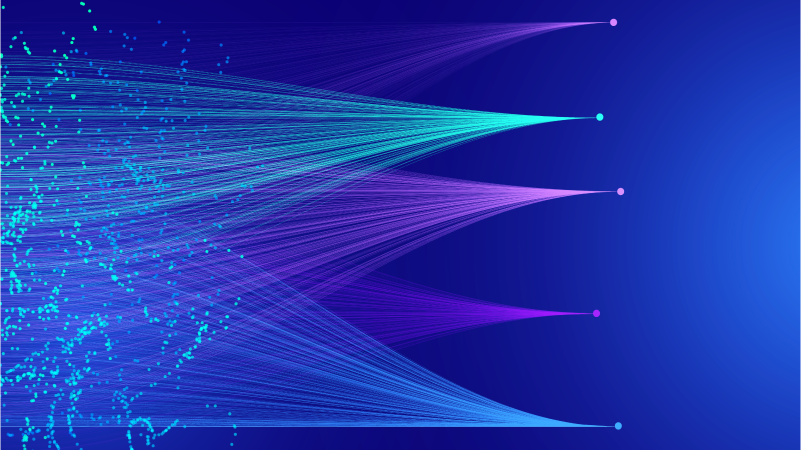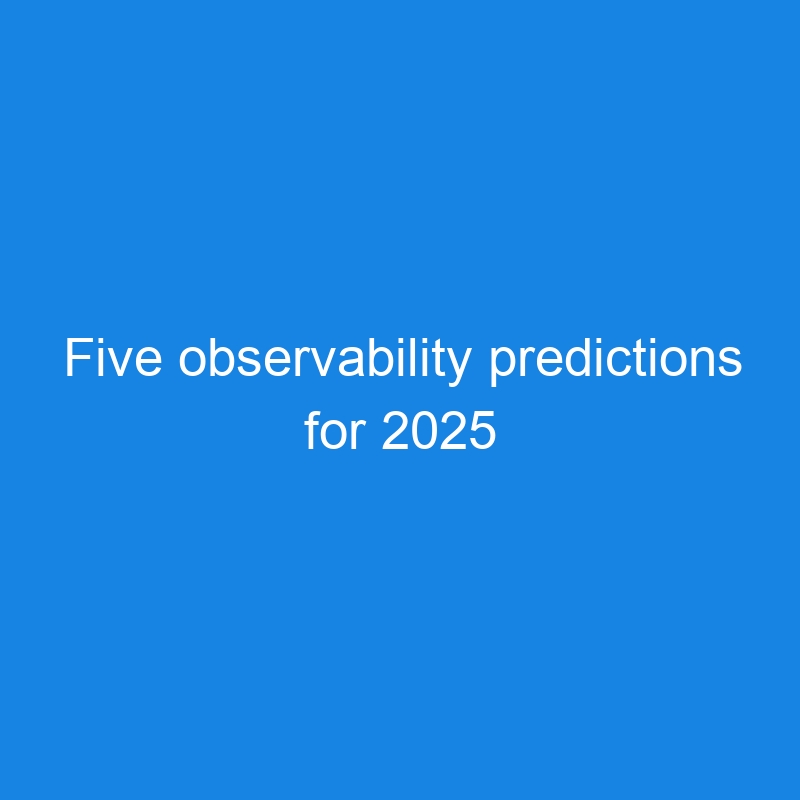
As the digital world grows more complex, 2025 will bring a tipping point for organizations navigating increasingly dynamic and interconnected IT environments. Observability, long a cornerstone of IT operations, will take on transformative new roles. Driven by rapid advances in AI, evolving regulatory frameworks, and mounting sustainability pressures, observability will no longer be a passive diagnostic tool. Instead, it will lead to proactive, automated, and intelligent operations.
These prediction themes for 2025 outline how observability will evolve to meet the needs of a rapidly changing landscape. From new standards for automation and security convergence to redefining sustainability in IT, these shifts represent not just technological advancements but paradigm changes in how organizations operate, innovate, and compete.
Key insights for executives
- Adopt preventive observability to stay ahead of disruptions. Shift from reactive to proactive IT management by leveraging AI-driven systems that autonomously predict and prevent issues before they become a problem, ensuring uninterrupted operations and enhanced customer satisfaction.
- Integrate observability and security for continuous compliance. Simplify regulatory adherence and enhance resilience by implementing platforms that automate compliance reporting and proactively mitigate risks, safeguarding your reputation and bottom line.
- Observability becomes mandatory for any serious sustainability strategy in IT. Instead of just reporting sustainability, leverage observability tools to optimize energy usage and reduce carbon footprints, achieving sustainability goals while lowering operational costs and meeting regulatory expectations.
- Ensure trust in AI with robust observability. Monitor and validate AI-driven decisions with observability platforms that enforce ethical standards and prevent errors, building stakeholder trust and ensuring automation aligns with business objectives.
- Leverage AIOps to enable preventive operations and boost agility. Replace reactive workflows with AI-powered, observability-driven systems to predict and resolve issues proactively, reducing costs, increasing efficiency, and accelerating time to market.
Here are five ways observability will shape the future, starting in 2025.
Prediction #1: Observability shifts from reactive to preventive

Preventive observability will move beyond siloed systems into interconnected, autonomous ecosystems, redefining how organizations ensure reliability and resilience. These ecosystems will function seamlessly across distributed environments, leveraging AI to understand the real-time context of digital services. This capability enables automation to predict and prevent issues before they occur, leading to an era of foresight and collaboration.
Unlike earlier AIOps approaches that struggled to deliver due to limited contextual understanding, this new generation of AI-powered observability integrates insights from across systems to identify root causes, predict cascading failures, and act autonomously in real time.
Consider these examples:
- A logistics company could leverage preventive observability to identify potential bottlenecks in supply chains and reroute shipments before delays occur.
- In healthcare, observability could predict system slowdowns during critical periods, ensuring seamless patient care.
- Financial services organizations could use it to preempt system outages during peak trading hours, protecting both customers and market stability.
- During the holiday season, an e-commerce platform anticipating a traffic surge could use preventive observability to predict slowdowns or overloads, proactively scale resources, optimize performance, and balance cloud costs.
Imagine a future where operational insights are shared seamlessly across industries—whether logistics, healthcare, financial services, or online services—creating a level of interconnectedness that will drive operational excellence.
In these autonomous ecosystems—built on hybrid and multicloud environments—preventive observability automates the complex task of orchestrating distributed systems. By predicting and resolving issues before they impact operations, organizations can ensure service availability, minimize downtime, and reduce operational overhead. This proactive, context-aware approach will soon become the industry standard.
Prediction #2: Observability and security converge around continuous compliance

In 2025, compliance will no longer be a static exercise—particularly for European and globally operating financial services companies—with more changes to follow. Continuous compliance will evolve into a real-time dynamic system driven by security standards and regulatory frameworks like the following:
- EU’s Digital Operational Resilience Act (DORA) and Network and Information Security Directive 2 (NIS2),
- Bank of England’s Operational Resilience Policy in the UK
- Australia’s CPA 230
- Hong Kong’s Monetary Authority Operational Resilience Framework
- The Federal Reserve Regulation HH in the United States
This shift adds to the growing need for observability and security to converge, providing organizations with unified insights to address compliance, reduce redundant data collection, and strengthen threat detection and incident response.
For example, AI systems will continuously monitor threat exposure to assess risks and prepare configuration adjustments. These adjustments can be reviewed and approved by humans or applied automatically, ensuring organizations maintain compliance without disrupting operations. This human-in-the-loop approach is essential for maintaining accountability, particularly when regulatory violations must be reported to governing institutions or national competent authorities (NCAs).
Continuous compliance will replace periodic audits with automated systems that monitor, analyze, and alert on regulatory adherence. By integrating observability and security, organizations gain the additional context needed to qualify violations, track interdependencies across systems, and address vulnerabilities proactively. For instance, a financial services organization could leverage a unified observability and security platform that uses AI to identify potential compliance risks, such as service-level violations or third-party software vulnerabilities, and implement automated remediations to maintain adherence to stringent regulations.
The convergence of observability and security offers more than just regulatory benefits—it equips organizations to combat increasingly sophisticated cyber threats. Observability widens the lens through which security professionals view and analyze data, delivering the context necessary to enhance resilience and reduce costs. By integrating observability into security strategies, organizations can foster the trust needed to operate confidently in an era of heightened risk.
Prediction #3: Observability is mandatory for any serious IT sustainability strategy

Sustainability will take center stage in 2025, as organizations face growing energy demands from cloud environments and increasingly AI-driven operations.
Observability platforms will become essential for monitoring and optimizing the energy consumption of AI workloads, identifying inefficiencies, and enabling intelligent workload distribution. As an added benefit, optimizing energy efficiency through observability not only lowers operational costs, but also aligns with sustainability commitments set by cloud providers. This approach ensures businesses stay competitive as energy costs rise and sustainability regulations tighten.
For example, a global retailer could leverage observability to track energy efficiency across its data centers. With platforms offering discovery and automatic topology mapping, a team can easily identify underutilized resources, revealing significant opportunities for architectural optimizations—often referred to as “green coding.” Such platforms can also enable smart orchestration for dynamic resource utilization. By embracing these strategies, the retailer could significantly reduce energy consumption and operational costs while fulfilling its environmental commitments. This evolution redefines IT’s role from a traditional cost center to a strategic enabler of sustainability.
As energy-intensive AI workloads become the norm and new sustainability quotas gain traction through regional mandates, like the EU’s Green Deal and Corporate Sustainability Reporting Directive (CSRD), sustainability will no longer be optional. Organizations that fail to integrate sustainability into their IT strategies risk non-compliance, reputational harm, and rising costs. Observability plays a leading role in this transformation by delivering the detailed insights necessary to optimize operations—not just report on sustainability. This shift helps businesses strike a sustainable balance between innovation and environmental stewardship.
Prediction #4: AI observability becomes indispensable for AI-driven services

In the evolution of digital transformation, the rise of AI-based services introduces new complexities that make observability more critical than ever. With observability, teams will be able to build and operate new AI-powered digital services for performance and reliability, keeping cost, AI drift, user experience, and transparency in mind. These capabilities will give organizations the confidence to deploy AI technologies at scale.
As businesses deploy AI-driven services for predictive maintenance, financial forecasting, or cybersecurity, observability platforms will go beyond monitoring system performance to include visibility into AI queries. With this clarity, organizations can identify potential errors, correct biases, and ensure decisions align with both business goals and ethical standards.
In 2025, observability will play an even larger role, as organizations increasingly rely on AI to power critical services. By providing end-to-end visibility and actionable insights, observability will empower businesses to confidently scale AI systems, maintaining accountability, reducing risks, and building trust. Therefore, observability will no longer be an optional enhancement, but a mandatory component for delivering safe and effective AI-driven services.
Prediction #5: AIOps is dead, long live AIOps!

AIOps has promised to transform operations for some time, but its fragmented technologies and limited context have prevented it from achieving its full potential. In 2025, AIOps will finally deliver on its promise, fueled by advances that enable AI systems to effectively communicate and collaborate. This evolution will redefine how organizations manage IT and business operations, setting a new standard for preventive operations.
The breakthrough comes from composing diverse AI techniques to work together toward common goals. Through interconnected AI systems—some specialized in prediction, others in precision processing of context, and others in suggesting remediations—AIOps will deliver intelligent automation and real-time root-cause analysis. These systems will predict disruptions, resolve issues before they escalate, and ensure business continuity. By integrating these capabilities, AI can provide deeper insights and take more precise actions by analyzing data in context and learning continuously from operational feedback.
For example, an enterprise managing complex, distributed environments could leverage this advanced AIOps approach to proactively address potential capacity bottlenecks during peak demand, ensuring smooth customer experiences while minimizing costs. Beyond IT, this approach will help organizations address broader challenges, such as forecasting supply chain risks or adapting to shifting market conditions.
The resurgence of AIOps will redefine industry benchmarks for efficiency and resilience. By automating tasks, reducing operational overhead, and enabling faster time-to-market, organizations will achieve unprecedented agility. To succeed, businesses must invest in advanced observability solutions and ensure teams are equipped to unlock the full potential of AI-driven operations.
The post Five observability predictions for 2025 appeared first on Dynatrace news.
